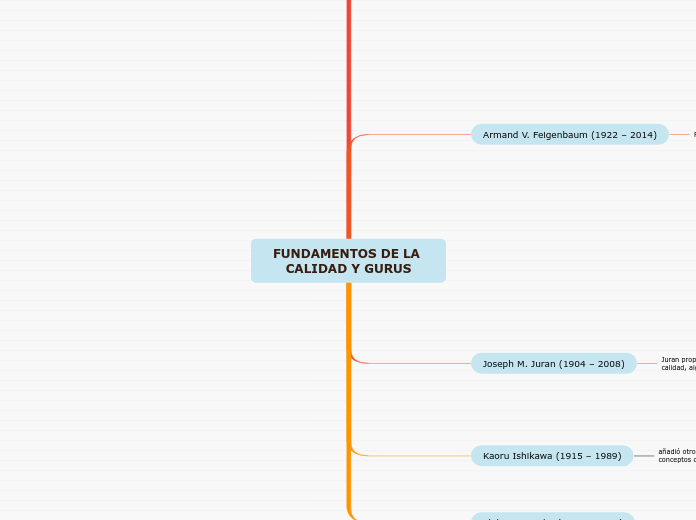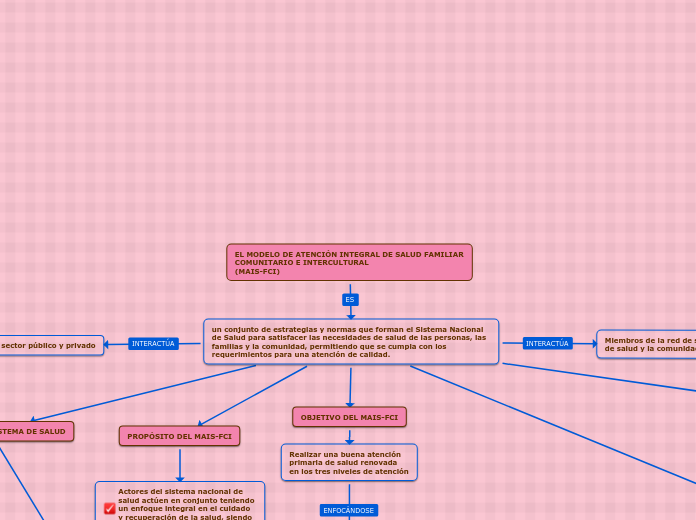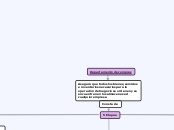FUNDAMENTOS DE LA CALIDAD Y GURUS
To name your story, you have to think about the overall message and what you want your audience to understand from the story. Also, make it relevant and easy to remember.
Philip B. Crosby (1926 – 2001)
su aportación se baso en 6C
Continuidad
Corrección
Comunicación
Competencia
Compromiso de la organización
Comprensión
Kaoru Ishikawa (1915 – 1989)
añadió otros significados e introdujo algunos conceptos como:
°Diagrama Ishikawa o diagrama de causa u efecto.
°Siete herramientas de Ishikawa para el control de la calidad.
Joseph M. Juran (1904 – 2008)
The ending of a story is essential. We all know that if the ending is weak, what happened before loses its importance. So make it unpredictable, but fair. A resolved ending answers all the questions and ties up any loose threads from the plot.
Juran propuso 10 medidas para la mejora de la calidad, algunas de ellas fueron:
°Crear consciencia de la necesidad y oportunidad de mejorar.
°Establecer metas para la mejora.
°Crear planes para lograr los objetivos.
°Proporcionar capacitación.
°Ejecutar proyectos para resolver problemas.
°Informe sobre el progreso.
°Dar un reconocimiento para el éxito.
°Comunicar los resultados.
°Llevar la cuenta.
°Mantener el impulso de mejora.
Armand V. Feigenbaum (1922 – 2014)
The middle of the story is where you add layers of complications that will lead to the end. Reveal more about the character's journey. Did their personality go through changes? How did they overcome the challenges? And as you build up the story’s central conflict, make it more personal to that character. Also, from the middle act, you have to lead into the final act.
desarrollo los 14 puntos de gestion.
Poner a todos en la compañía a trabajar para llevar a cabo la transformación.
Instituir un programa vigoroso de educación y auto mejora.
Remover barreras para apreciar la mano de obra y los elementos que privan a la gente de la alegría en su trabajo.
Eliminar cuotas numéricas y la gestión por objetivos.
Eliminar eslóganes, exhortaciones y metas pidiendo cero defectos o nuevos niveles de productividad
Borrar las barreras entre los departamentos.
Eliminar el miedo y construir confianza
Establecer líderes
Establecer entrenamiento dentro del trabajo
Mejorar constantemente y por siempre los sistemas de producción, servicio y planificación de cualquier actividad.
Terminar con la práctica de comprar a los más bajos precios.
Desistir de la dependencia en la inspección en masa para lograr calidad.
Adoptar una nueva filosofía de cooperación
la constancia en la mejora de productos y servicios
Walter Shewhart (1891 – 1967)
In the beginning of the story (or the exposition), you will need to introduce the setting and characters. You might also want to introduce the main conflict. This part of the story is important because it gives the reader necessary background information and maybe even a first insight into a character’s personality.
PRINCIPALES APORTACIONES
desarrollo el PHVA que permite la estandarización de acciones y la resolución de problemas, generando mejoras constantes en la gestión










